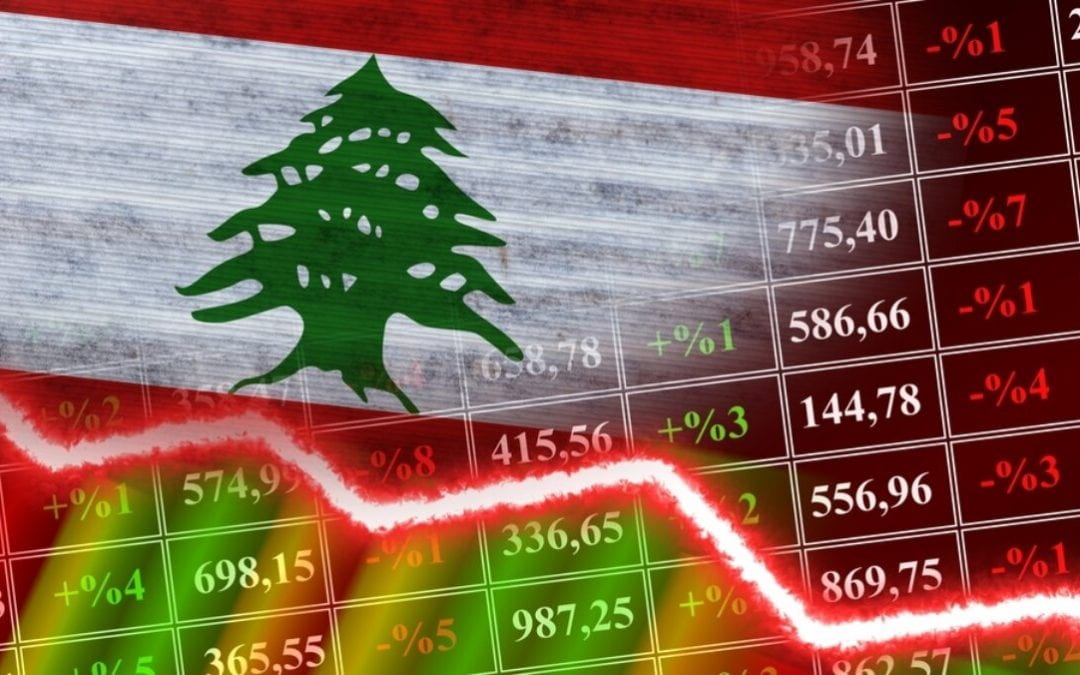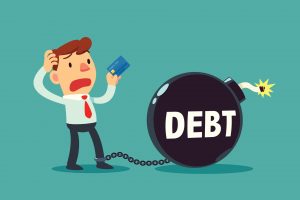
by mse47 | Nov 19, 2023 | Uncategorized
Lebanon has been ranked as one of the top countries with severe negative GDP growth. As shown in the below graph, Lebanon’s GDP growth is also lower than that of its neighboring countries, including Syria which has been facing a war since 2011.
In order to check for potential causes of this severe negative GDP growth, Lebanon was compared with other countries on the level of economic indicators. What is found interesting is that Lebanon has the highest external debt (expressed as % of GNI) compared to other countries, as the below figure shows.
Let’s dig deeper into the relationship between external debt and GDP growth in Lebanon. As the below figure shows, when Lebanon’s external debt made a big jump and increased by 130% (from 147% to 277.9%), GDP growth had a severe decline of 15.5% (from -4.2% to 19.7%).
This relation is validated by a study performed by The Monetary Fund that states that external debt shocks have a negative impact on GDP in both, the short- and medium-terms. This is further shown in bellow screenshot taken from the study (The Monetary Fund,2022).

For this reason, The Monetary Fund, in collaboration with the World Bank, has developed The Heavily Indebted Poor Countries (HIPC) Initiative that provides debt relief for qualifying countries if these countries develop a Poverty Reduction Strategy Paper (PRSP) to show how this relief would help them re-increase there GDP.

by Mahdi Mohammad | Apr 15, 2022 | Uncategorized
Lebanon is suffering from an economical and financial crisis since 2019. The world bank has classified this crisis as one of the worst 3 crises since mid-nineteenth century. One main reason behind this crisis is the high external debt and its services which have led eventually to a great negative impact on Lebanon’s GDP. One way to control the increase of this debt is working on the development of the agricultural sector.
Problem:
The external dept as well as its services have increased dramatically over years. This increase was highly sharp between the years 2019 and 2020. At the same time, this high increase in the debt was associated with a decrease in GDP growth, specifically between the years 2016 and 2020.
Solution:
The contribution of agriculture in the GDP of Lebanon was decreasing over years. So, supporting the agricultural sector would be one of the solutions that can help freezing the increase in debt. In fact, Lebanon has the required elements to do that, i.e., a cultivatable land and water resources. According to the World Bank collection of development indicators, Lebanon has 64.32% of its land cultivatable.
Supporting the agricultural sector means that the government is requested to work on a plan that can improve the agricultural sector. This is important as a development in the agricultural sector would be reflected as an increase in the agricultural production. Therefore, this will lead to a decrease in the imports and an increase in the exports of agricultural products. Finally, all of this would cause a higher contribution of agriculture in GDP and a decrease in borrowing and debt levels.
This proposed solution has been adopted by many other countries to support their economy. According to the World Bank, agriculture has accounted for more than 25% of GDP in developing countries in the year 2018.
Findings:
- Developing agricultural sector is essential for the development of the Lebanese economy.
- Improving the agricultural sector will help Lebanon in getting out of the economic and financial crisis.
Recommendation:
The government should construct and implement a plan that can enhance the agricultural sector in Lebanon.

by Lea El Halabi | Apr 15, 2022 | Generic, Visualization
Does a Country’s Borrowing Policy Affect its Population’s Income level?
The Case of Lebanon

DOLLAR? LBP?
WHAT’S THE EXCHANGE RATE TODAY?
DISCOUNTING CHECKS? AT WHAT RATE?
WHAT???? 20%????
THIS MEANS I’M LOSING 80% OF MY MONEY!!!
I WAS DOING OK BUT NOW I CAN BARELY MAKE ENDS MEET…
This has unfortunately been the sad reality that
theLebanese people have been living for since
October of 2019.
WHY?
Because a Banking | Financial | Currency | Crisis
Made a Huge Bubble Burst!

BUT HOW DID WE GET HERE?

Lebanon has had a budget deficit for over 20 years
and has been borrowing from external parties
for as long as we can remember.
So, as Lebanese citizens, we are born indebted.
A country’s national debt affects its population’s income level:
-
Growing debt has a direct effect on economic opportunities
-
If high levels of debt crowd out private investments, workers would have less to jobs do and therefore earn lower wages

Countries with LOWER DEBT exhibit HIGHER INCOME levels per capita.
SO HOW HAS LEBANON’S DEBT BEEN CHANGING OVER TIME?

WHAT CAN WE DO TO MAKE THINGS BETTER?

Potential Solutions include but are not limited to:
-
Supporting Production and Services Sectors leading to more Job Creation and eventually More Wages
-
Improving Trade Agreements leads to more exports which would Reduce Budget Deficits and make the country economically healthier
-
Attracting Foreign Direct Investments by providing a healthy capital market (ex: improving Reporting Practices) which leads to More Investments & More economic opportunities, More Jobs and eventually More wages
IS THERE PROOF?
Countries with Open Trade Policies seem to have higher income levels

Countries with Updated Reporting Practices also have higher income levels

SO, WHAT ARE THE RECOMMENDATIONS?
STOP borrowing from international Agencies
CONTROL High National Debt Levels
Implement Policies to boost the economy













